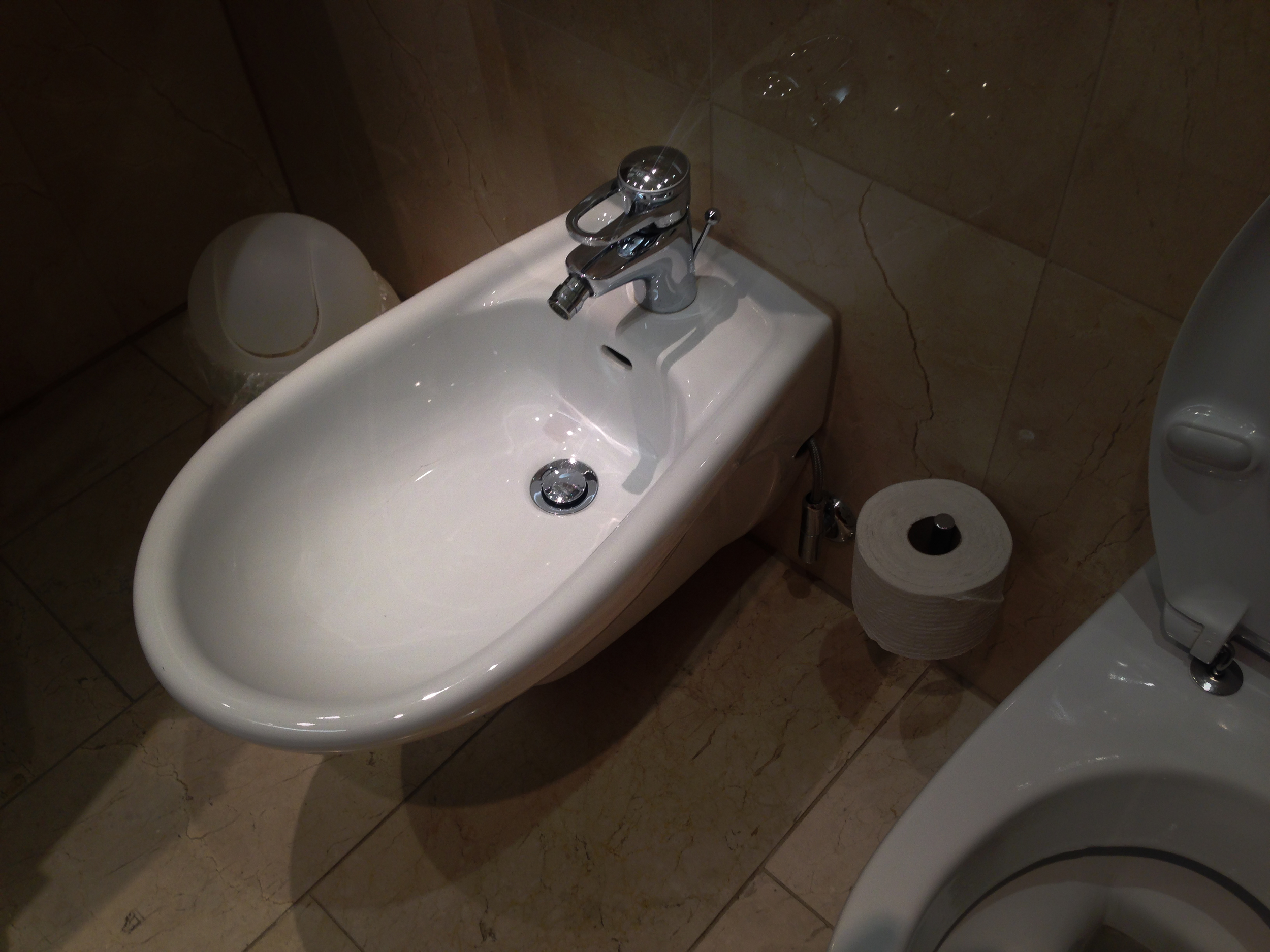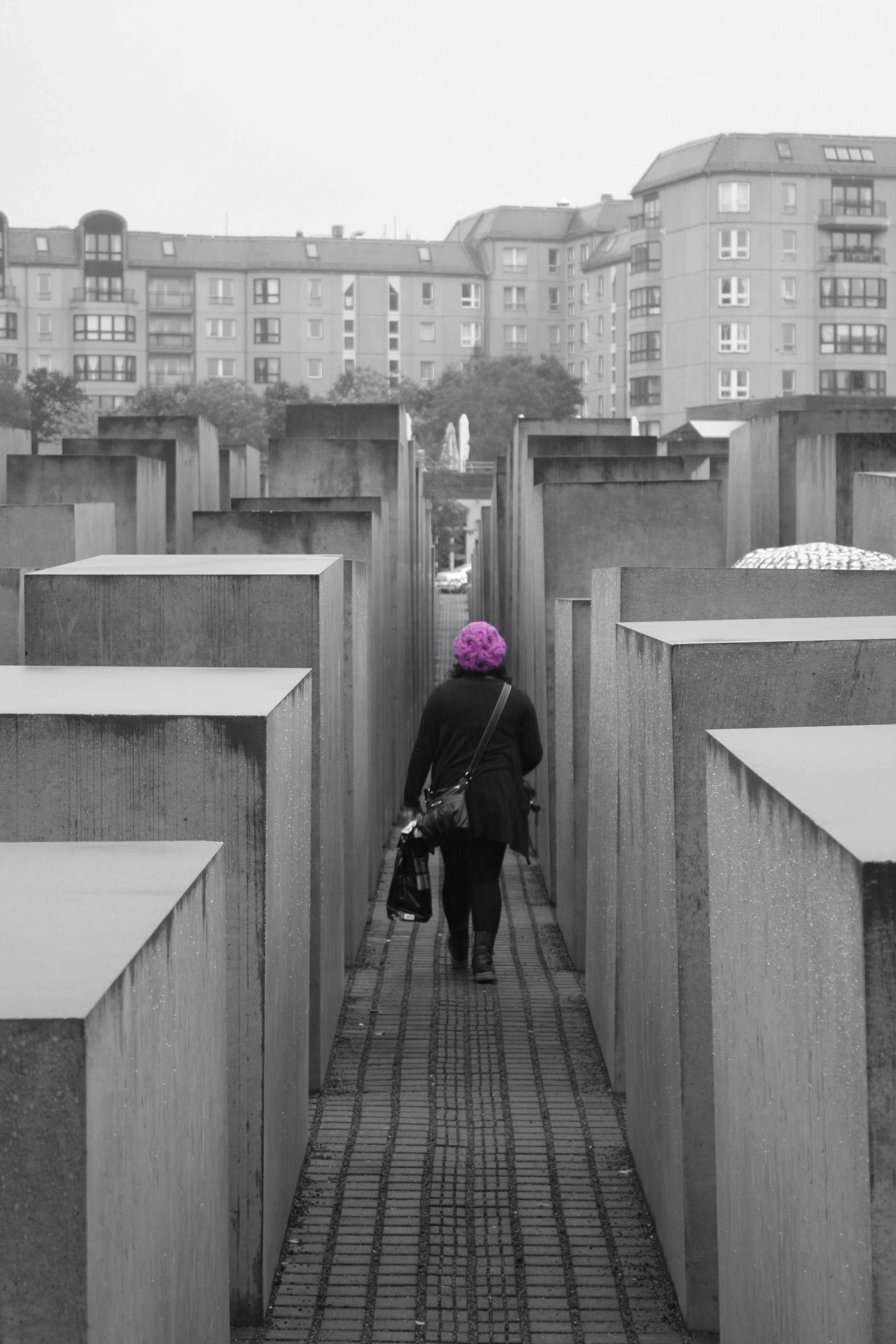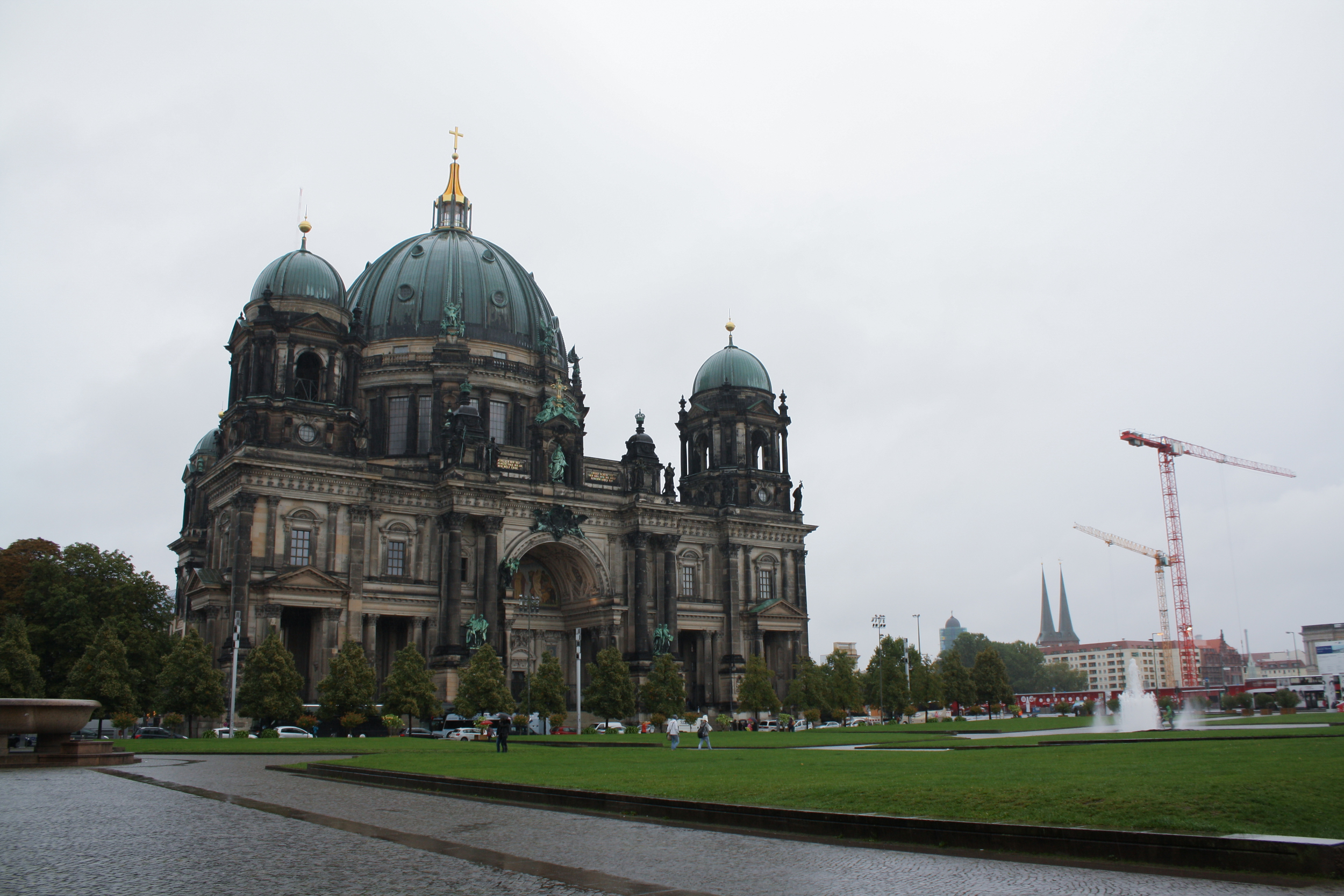I enjoyed Berlin but I struggle in explaining why. To start by being honest, though I always respect and seek out a city full of history, Berlin was mostly chosen as the conclusion of our trip to Europe for its cheap airfare back to LA. As is the case, I think it’s safe to say that none of us knew exactly what to expect from Berlin. To complicate things, we arrived in a drizzle that would hang over us for the duration of our stay. Damp and exhausted from non-stop exploration of the previous four cities, our sense of adventure was extinguished. Much needed relaxation took precedent and thus we would only see the Berlin around our hotel. Perhaps I will learn to better pace our travel, someday.
Checkpoint Charlie today, complete with actors playing American soldiers. No photos with them though; Anything to avoid a tip.
That’s not to say we didn’t get out of our hotel. Centrally located on Friedrichstrasse in the former Eastern-half of the city, we took advantage of easy walking access to a few significant landmarks, the most obvious of which was the Berlin Wall (via the Bradenburg Gate and Checkpoint Charlie). Acknowledging that the Brandenburg Gate is as impactful as images suggest and without disregard for the historical significance of it all, after a few photos and a stroll around the outdoor exhibit we were all wondering, “Ok, we saw the Wall…now what?!” There was the TV Tower but we already had our fill of “taking photos from tall things”; There were museums but we already had our fill of museums; The Kaiser Wilhelm Memorial Church, a late-19th century church damaged in a World War II air raid, was high on my to-see list but a summer refurbishment ran long and as far as we could tell, it was still under-tarps so we never attempted the trek. Of these sights, I do not wish to suggest that “once you’ve seen one, you’ve seen them all”, but again, we were so tremendously exhausted that we just didn’t have it in us.
Thus, we walked around the neighborhood our hotel was in. The environment was mostly new and reinvented with plenty of shopping opportunities and only every now and then would we discover an older building. Not to force a narrative on the city but it felt as though the modern Berlin had a unique relationship with its older buildings.
For example, when taking a stroll through the city, we stumbled upon a memorial known as the Neue Wache. Though locked when we arrived, we peered through the bars to find a statue of a mother holding her dead son, wet from sitting beneath an opening in the celling. It was a moving scene but its dedication was in German so I pulled it up on Wikipedia.
Initially built as a royal guard house, it was redesigned as a memorial after the conclusion of World War I, when it became the “Memorial of the Prussian State Government”. In the Nazi-era, it became the site of an annual Heldengedenktag celebration, a day different from a traditional day of mourning, as Wikipedia explains, “its emphasis shifted to hero worship rather than remembering the dead.” After World War II and in the Communist-era, the memorial again changed, then called the “Memorial to the Victims of Fascism and Militarism”. Finally, after the reunification of Germany, it arrived upon its current and longest name, the “Central Memorial of the Federal Republic of Germany for the Victims of War and Dictatorship.” It was a beautiful and needed memorial for a city that has been through a lot.
For me, Neue Wache symbolized, through both its intended memorialization and its constant reclassification, the tremendous ideological extremes Berlin has witnessed in its modern history. It is possibly for that reason, I believe, that Modern Berlin, or at least the region we stayed in, emerged to me as a sleek and faceless city; Its buildings were mostly grey and glass, with no defining features. I suppose we were in a business sector (no different than how downtown Los Angeles appears) but I cant help but think that in a city has lost whole chunks of its history, its modern design has little to pull from. It was in this regard that Berlin felt very different from the other European cities we had visited thus far.
Rain against the Holocaust Memorial.
A large example of this undefined architecture was the Holocaust Memorial. While a bold statement, the wave of textureless blocks felt more like charted data than human loss. Even looking back at our photos in the memorial, it is clear we are unsure of how to pay our respects or respond to it.
Again, this architectural analysis is not to say that we didn’t enjoy our stay in Berlin and our farewell to Europe—I did say I enjoyed it! As I mentioned, Berlin provided us with relaxation and relaxation is what we needed. It was the first time on the trip I didn’t push Cindy, Chuck, and Jose into a mad dash to experience everything. Rather, we strolled around the streets, stopping only for what we found interesting. For example, we stumbled upon the Galeries Lafayette, a fancy department store themed to “Paris”. We also enjoyed a free, public, nighttime light-show on the history of Berlin and the modern German state, projected against a building adjacent to the Reichstag—a democratic nighttime spectacular, if you will. And of course, we enjoyed stopping for some pizza, beer, and even Dunkin Donuts!
And it's for all of these reasons that I ultimately feel a little guilty that some of my greatest memories of Berlin include curing a bad mood with some McDonalds or gorging myself twice at Vapiano, an awesome cafeteria style Italian food chain-restaurant (seriously though, it was amazing!). I look forward for an opportunity to go back and discover the parts of Berlin I missed. Despite all of it, it was a relaxing way to spend the twilight moments of an awesome trip with some wonderful friends. That is why I enjoyed Berlin.
For more photos from Berlin, please check out the gallery below:






























